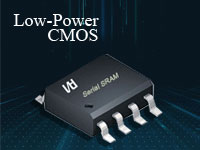What are the new types of storage?
At present, the emerging storage technology aims to integrate the switching speed of SRAM and the high-density characteristics of DRAM, and has the non-volatile characteristics of Flash. The new storage technology can be divided into phase-change memory? (PCM, Phase Change Memory), Magnetic Variable Memory (MRAM), Resistive Variable Memory (RRAM/ReRAM) and Ferroelectric Memory (FRAM/FeRAM).
Phase change memory can obtain different resistance values by changing the phase state of phase change materials, which is mainly suitable for large-capacity independent storage applications. The magnetic variable memory changes the resistance by changing the direction of the magnetic chip in the magnetic material, and is mainly suitable for embedded applications with small capacity, high speed and low power consumption.
The resistive memory realizes the resistance change through the generation or closing of the conductive channel in the resistive material. It is currently mainly used for physical unclinable function (PUF), and may play a role in artificial intelligence, storage and computing integration and other fields in the future. In addition, in recent years, the integration of storage and computing is gradually becoming one of the hot trends to solve the current storage challenges.
The above-mentioned new storage technologies have some common features, such as non-volatile or persistent features, and all mainstream non-volatile memories are derived from read-only memory (ROM) technology; Some technologies can reduce the size through process, thus reducing the cost; There is no need to use the block erase/page write method required by flash memory, which greatly reduces the write power consumption and improves the write speed.
Phase change memory can obtain different resistance values by changing the phase state of phase change materials, which is mainly suitable for large-capacity independent storage applications. The magnetic variable memory changes the resistance by changing the direction of the magnetic chip in the magnetic material, and is mainly suitable for embedded applications with small capacity, high speed and low power consumption.
The resistive memory realizes the resistance change through the generation or closing of the conductive channel in the resistive material. It is currently mainly used for physical unclinable function (PUF), and may play a role in artificial intelligence, storage and computing integration and other fields in the future. In addition, in recent years, the integration of storage and computing is gradually becoming one of the hot trends to solve the current storage challenges.
The above-mentioned new storage technologies have some common features, such as non-volatile or persistent features, and all mainstream non-volatile memories are derived from read-only memory (ROM) technology; Some technologies can reduce the size through process, thus reducing the cost; There is no need to use the block erase/page write method required by flash memory, which greatly reduces the write power consumption and improves the write speed.
CONTACT US
USA
Vilsion Technology Inc.
36S 18th AVE Suite A,Brington,Colorado 80601,
United States
E-mail:sales@vilsion.com
Europe
Memeler Strasse 30 Haan,D 42781Germany
E-mail:sales@vilsion.com
Middle Eastern
Zarchin 10St.Raanana,43662 Israel
Zarchin 10St.Raanana,43662 Israel
E-mail:peter@vilsion.com
African
65 Oude Kaap, Estates Cnr, Elm & Poplar Streets
Dowerglen,1609 South Africa
E-mail:amy@vilsion.com
Asian
583 Orchard Road, #19-01 Forum,Singapore,
238884 Singapore
238884 Singapore
E-mail:steven@vilsion.com
